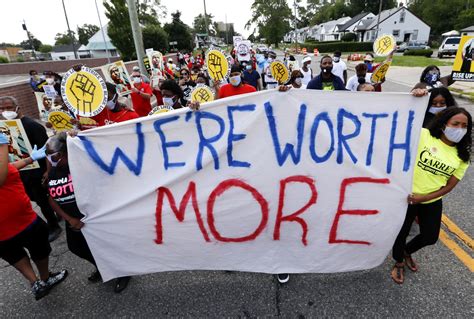In the heart of America’s political landscape lies a complex web of shifting alliances and allegiances. The traditional lines that once neatly divided voters based on income and education are now blurred, giving rise to a new era of class warfare where money and schooling no longer hold the key to understanding voting patterns.
“One might wonder whether this means that the materialist class analysis of the classic kind has been turned on its head.”
The recent U.S. presidential election showcased a significant upheaval in voter behavior. Surprisingly, those earning less than $50,000 annually leaned towards supporting Donald Trump—a stark departure from historical trends. Conversely, wealthier demographics gravitated towards the Democratic camp, particularly favoring Vice President Kamala Harris among those making over $100,000 per year.
As we navigate these uncharted waters of American politics, it becomes evident that simplistic classifications fall short in capturing the intricate tapestry of societal divisions at play today. Renowned historian Tim Barker aptly notes that what we’re witnessing is not a straightforward realignment but rather a nuanced dealignment—a fragmentation of loyalties and ideologies cutting across traditional class boundaries.
“All too often when materialist analysis is applied, it is a byword for crude simplification.”
To truly grasp the nuances driving contemporary political leanings in the U.S., we must embrace a more sophisticated three-class model. Beyond just contrasting the working class with the affluent elite, there exists an influential third player—the Professional-Managerial Class (PMC). This cohort wields power not only through economic status but also via educational credentials and authority within society.
Imagine a scenario where social dynamics mirror an average high school setting—an analogy highlighting how varying backgrounds intersect with educational aspirations to shape individuals’ perceptions and affiliations. The PMC’s pervasive influence permeates every aspect of modern life—from healthcare facilities to corporate boardrooms—exerting control over working-class Americans at multiple levels.
“The stereotypical working-class Trump voter admires Trump as… because he clearly scorns the PMC.”
At the core of this multifaceted clash lies a profound sense of resentment harbored by segments of the working class towards what they perceive as ingrained elitism championed by PMC figures like Harris. The overt disdain for established norms and values symbolizes a broader cultural rift—one where authenticity takes precedence over perceived intellectual superiority or ideological conformity.
Diving deeper into this socio-political panorama unveils glaring disparities often overlooked by conventional statistical analyses. Existing data parameters centered on education levels or income brackets fail to capture the intricate interplay between various classes’ motivations and aspirations—a shortfall requiring urgent attention for accurate interpretation in today’s volatile political climate.
“When people… suggest they do not want to be Medicaid recipients, they should be taken seriously.”
Moreover, discussions around addressing inequality must transcend mere redistributive policies to incorporate broader considerations around societal perceptions of meritocracy and self-reliance. The desire for self-empowerment echoes throughout disenfranchised communities seeking avenues beyond state dependence—laying bare profound implications rooted in America’s deeply entrenched class structure.
As we navigate through these uncharted territories marked by social upheavals and ideological clashes, it becomes imperative to adopt more nuanced lenses capable of deciphering intricate power dynamics at play within American society. By acknowledging these complexities and delving beneath surface-level statistics, we can unravel the underlying motivations steering diverse socioeconomic classes towards diverging paths in pursuit of their distinct visions for tomorrow’s America.

